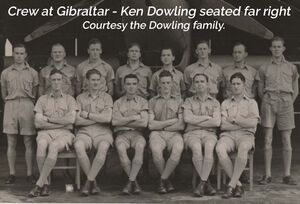Flight Lieutenant Kenneth Littlejohn DOWLING
Flight Lieutenant Kenneth Dowling was born in Echuca Victoria on 9 March 1918.
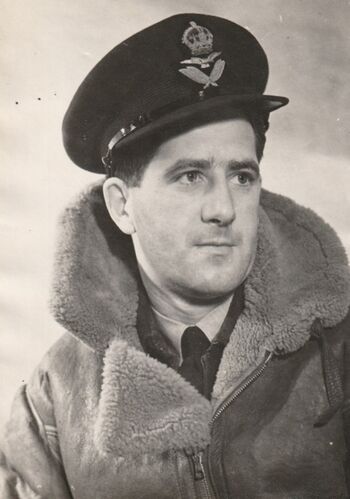
A grazier, he initially enlisted in the 17th Light Horse and was discharged in May 1940 to join the RAAF.
He was mustered for aircrew and trained at No 1 Initial Training School (ITS) Somers, then No 1 Wireless and Air Gunners School (WAGS) at Ballarat Victoria, [Course 6] and No 1 Bomb Air Gunner School (BAGS) at Evans Head, South Australia.
He was posted to 6 Squadron at Rathmines, New South Wales. Here, Ken flew 14 sorties in Hudson aircraft in coastal command.
In July 1942 he was posted to 10 Squadron RAAF attached to the RAF station at Pembroke Dock in the UK.
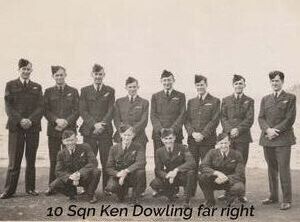
He flew 72 sorties in Sunderland Flying Boats.
The squadron had the task of protecting allied shipping around the coast of the UK from U-boat attack. Ken was a member of the crew that successfully sank U465 in the Bay of Biscay in May 1943, at the height of the Battle of the Atlantic.
Ken was granted a commission in July 1943 and returned to Australia in December 1944, stationed at No 1 WAGS Ballarat as a radar operator instructor until his discharge in March 1946.
Following his discharge, Ken established a successful Real Estate business in Melbourne, in which he remained principal until his death in 1979.
The FEATURE STORY with photos of Flight Lieutenant Kenneth Littlejohn DOWLING service no. 400554 has been provided by Mr Peter Dowling, secretary of the Air Force Association Ballarat Branch and his partner Sue Alexander, committee member of the Ballarat Branch.
Peter and Sue are active members of the AFA branch having recently presented The History of No. 1 Wireless Air Gunners School Ballarat WW2 to The Ballarat Aeroclub and at the August Social Meeting of the AFA Ballarat.
Peter was unaware that his father trained at 1 WAGS during WW2 until he visited the renovated Hut 48 at the Ballarat Airport [ AFA Ballarat HQ] and found his father listed on the 1 WAGS Memorial Roll, Course 6. Peter is also Secretary and Acting President and Treasurer of the RAAF Sunderland Association NSW.
As a tribute to his father and uncle, who both flew in Sunderland squadrons, Peter has donated a wonderful print of the Sunderland Flying Boat to Hut 48.
Many thanks Peter and Sue.
Janet Bates Website Coordinator
Sources:
Photograph from Dowling family collection
Defence Records – National Archives
Baff KC (1983) Maritime is Number Ten, A History of No. 10 Squadron RAAF
The Sunderland Flying Boat
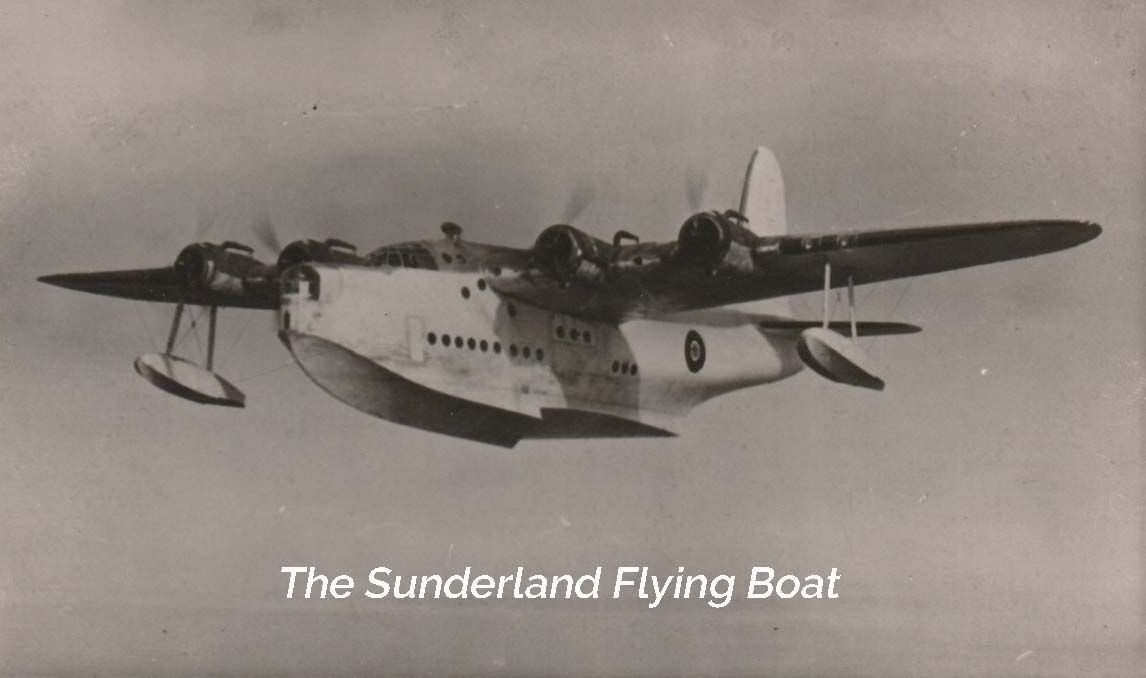
The Short S.25 Sunderland was a British flying boat patrol bomber, developed and constructed by Short Brothers for the Royal Air Force (RAF).
The aircraft took its service name from the town (latterly, city) and port of Sunderland in North East England.
Excerpt Short Sunderland - The Flying Porcupine
by Don Norrie - History of the Royal Canadian Air Force
RCAF Museum - Short Sunderland - The Flying Porcupine
In the early days of the Second World War, Nazi submarines were wreaking havoc on the convoys of ships carrying supplies and personnel from North America to the United Kingdom. These submarines roamed the Atlantic with impunity as no allied aircraft had the range to seek out and destroy the submarine Wolf Packs that were sending thousands of tons of ships and war materials to the bottom of the ocean. One of the answers to this dilemma was found in the Short Sunderland flying boat, a truly remarkable aircraft and mechanical wonder in many respects. It had great endurance and carried the latest anti-submarine detection equipment and specialized sea-war weaponry.
The Royal Air Force prior to the outbreak of hostilities was using Sunderlands in a maritime patrol capacity and when it entered war service, was the largest allied aircraft flown during World War 2. The Sunderland was sometimes nicknamed “The Pig” by its crews because the early models were underpowered. The Luftwaffe pilots that tried to attack it had more respect for this huge aircraft and referred to it as the; “Fliegende Stachelschwein” or in English, “The Flying Porcupine” because of the 14 machine guns it mounted for all-round protection.
As if that wasn’t enough armament, the RAAF thought it prudent to add two fixed .303 machine guns to the Mk. V on the port and starboard side of the nose and a gunsight for the pilot so he would be able to strafe a surfaced enemy submarine. The flying boat now sprouted 18 guns; the greatest number carried by any regular British military aircraft during the war.
The Sunderland had one vulnerable area and that was the belly. Because of the boat design it could not mount a belly turret. So, in order to prevent the enemy aircraft from coming up and underneath, they flew their patrols at a maximum height of 1000 feet above the water, but usually much lower than that.
In conclusion, the Sunderland was the gentle giant of its day. While the battles it fought were not glorious ones, its presence above the waves forced the enemy U-boats to keep their distance from allied convoys thus allowing more war supplies to reach their destinations. They were also instrumental in saving the lives of many downed airmen and torpedoed sailors who were then able to return to their units and fight another day.
As the war progressed the Sunderland played a vital role in the Battle of the Atlantic being credited with or sharing credit for the sinking of 26 German U-boats. It would also play a role in the evacuation of personnel from Crete during May 1941. Despite the war ending in Europe during May 1945 Sunderlands of Coastal Command still performed submarine patrols, with the 3rd of June 1945 seeing the last one take place.
Post-war the Sunderland would still play a role within the Royal Air Force, being used in the Berlin Airlift (1948 – 1949), flying 2,120 sorties, and three would be used in the Korean War (1950 – 1953) operating from Iwakuni, Japan. It wouldn't be until the 20th of May 1959 that the Short Sunderland made its last flight with the RAF when two Mk Vs of No. 205 Squadron made a formation flight taking off from RAF Seletar.
Other users of the type were the Naval Air Arm of the French Navy who retired their last two on the 30th of January 1962 and the Royal New Zealand Air Force who used them until June 1967. Some Sunderlands would be used on selected passengers’ routes into the 1960s.
During its ten-year production run between 1936 and 1946 749 Short Sunderland aircraft were built. Variants of Sunderland Flying Boats over this time saw their transformation from Sunderland Mk 1,11,111,1X to Mk V. These aircraft underwent various modifications and improvements particularly to fire power with added machine guns and increased load capacity of bombs.
A large aircraft the interior of the Sunderland's fuselage contained two individual decks; the lower deck contained a total of six bunks, along with a galley outfitted with a twin kerosene pressure stove, a yacht-style porcelain flush toilet, an anchoring winch, and a small machine shop for performing inflight repairs. The crew was originally intended to total seven members; this was subsequently increased for later versions of the Sunderland to around 11 crew members and sometimes greater, dependent upon the specific mission being undertaken. Perhaps the most surprising piece of equipment was a pair of carrier pigeons that could be used to signal the location of the crew if their aircraft was forced down or their radio failed.
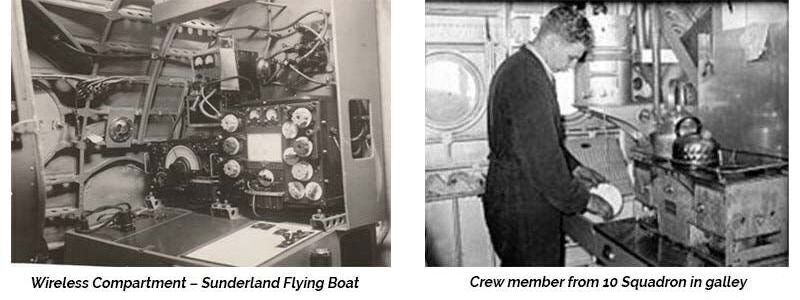
Prior to the outbreak of WW2 ninety Short Sunderland Mk Is were built with the power for this giant aircraft provided by four Bristol Pegasus 22, 29 or 32 engines. This gave the Mk I a top speed of 209 mph, range of 2,980 miles with a service ceiling of 17,900 ft. Armament consisted of eight 0.303-in machine-guns with a bomb load of 2,000-lb, either bombs, mines or depth charges, and was fitted with Air-to-Surface Vessel radar. No. 230 Squadron based at RAF Seletar was the first squadron to be equipped with Sunderlands, receiving their first on the 22nd of June 1938 with further deliveries over the next six months. The declaration of war between Germany and England saw the Royal Air Force call on four Sunderland squadrons. Nos. 204, 210 and 228 with the fourth being No. 10 Squadron, Royal Australian Air Force. Two Canadian squadrons flew Sunderlands from bases in Scotland, Ireland and Wales. No.422 (Flying Yachtsmen) Squadron was formed on 2 April 1942 at Lough Erne, Northern Ireland and No. 423 Squadron was formed on 18 May 1942 at Oban, Argyll, Scotland.
Although British anti-submarine efforts were disorganized and ineffectual at first, Sunderlands quickly proved useful in the rescue of the crews from torpedoed ships. On 21 September 1939, two Sunderlands rescued the entire 34-man crew of the torpedoed merchantman Kensington Court from the North Sea.
It was to be No. 228 Squadron who scored Coastal Commands first U-boat success when U-55 was scuttled on the 31st of January 1940 although it had to share this victory with HMS Whitshed (D77) and HMS Fowey (L15) of the Royal Navy. It wouldn't be until July 1940 that the type would be credited with its first unaided U-boat victory when on the 17th U-26 was sunk by No.10 Squadron, RAAF Sunderland.
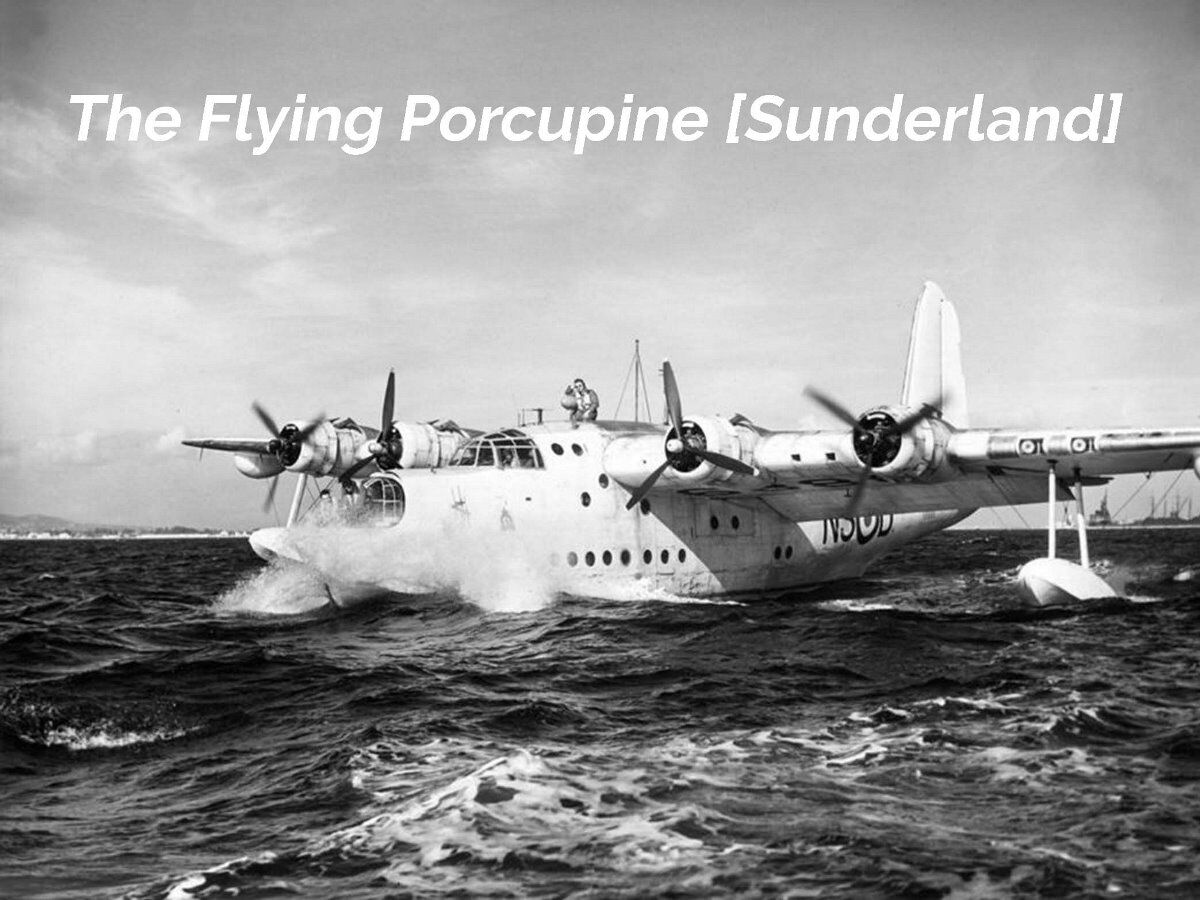
The Royal Australian Air Force (RAAF)
Fighting the U-Boats
The following extracts are from No. 3 Squadron
The Royal Australian Air Force (RAAF) Fighting the U-Boats
Although Australia is located [quite literally!] at the opposite end of the Earth from the North Atlantic Ocean, Australian airmen were heavily involved in the 'Battle of the Atlantic'. This was one of the key battles of World War II. It commenced on the very first day of the war in Europe in 1939, raged to a decisive peak in May 1943, and was only finally terminated by V.E. Day in May 1945.
Australia's commitment (of around 5,000 Australian airmen) arose from two decisions made early in the war:
In September 1939, the RAAF happened to have a batch of nine Short Sunderland flying boats under construction in the UK. When war broke out, Australia supported Britain by committing these flying boats, with their Australian crews (No.10 Squadron RAAF) to anti-U-boat patrols in British waters.
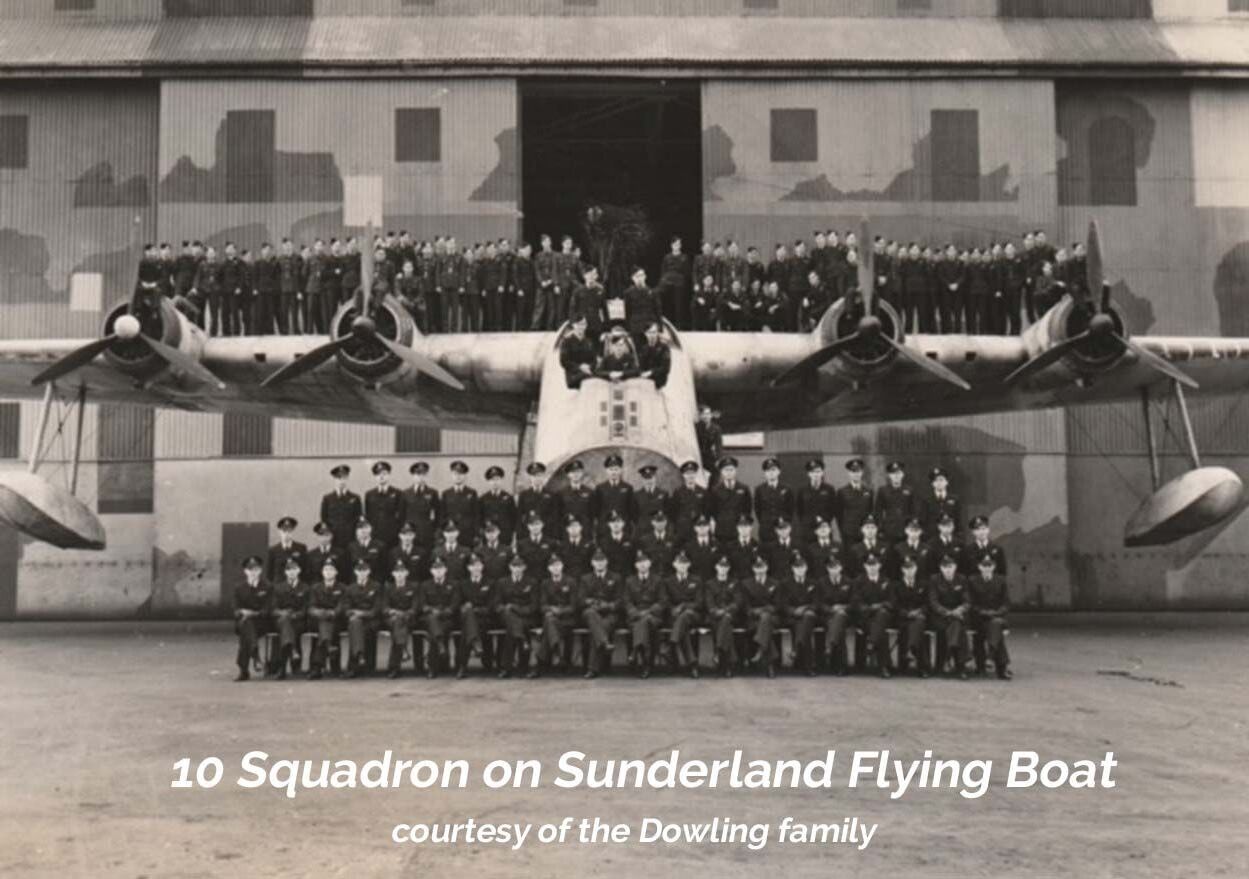
At the same time, the British 'Dominion' countries (including Australia, New Zealand, Canada and Rhodesia) were being organised into a massive Empire Aircrew Training Scheme.
Under this scheme, individual RAAF aircrew could typically find themselves receiving basic training in Australia, followed by advanced training in a second country (such as Canada) and operational conversion training with RAF units in Britain. This global system produced a sustained flow of Australians into Europe even after the Japanese attacked in the Pacific in 1941. It was originally expected that all the Australian aircrew arriving in Britain would be used to form predominantly 'Australian' squadrons. While this did indeed happen for around half of the RAAF manpower supplied to Europe, the other half were randomly allocated as replacements throughout the (British) Royal Air Force. As a result, many RAAF airmen played important roles in U-boat sinkings (in an amazing diversity of environments) which have historically been classified as 'British' successes.
U-465 Sunk
7 May 1943
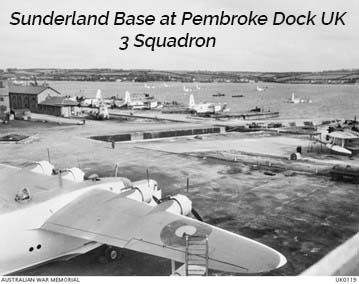
Source: Baff KC (1983) Maritime is Number Ten, A History of No. 10 Squadron RAAF pp276-277
Early in the pivotal month of May 1943, the successful British introduction of centimetric radar at night - and Doenitz's corresponding 'fight-back directive' - produced a rash of daylight U-boat sightings.
On 7 May 1943, Flight Lieutenant Geoff Rossiter in 10 Squadron Sunderland W3993/W was rewarded when the vigilance of his crew led to the discovery of no fewer than three U-boats during a single sortie.
The first two dived before Rossiter could close to their positions. Two hours later, while flying just beneath a broad swiftly moving cloud canopy, against which the white camouflaged Sunderland was almost invisible, a third homeward bound U-boat was seen through binoculars. The Sunderland broke cover only two miles or so away from the sub and dived in a surprise attack.
The U-boat swung beam on as Rossiter swept overhead at approximately 50 feet and released his depth charges. His gunners prevented any return fire while he carried out a second attack from the port quarter, dropping his four remaining depth charges. The U-boat, damaged and trailing oil, circled for a while then became stationary and half an hour after the initial attack slowly submerged. U-465 was sunk with the loss of all on board.
Rossiter and his crew, including Ken Dowling, returned to their base at Pembroke Dock, South Wales.
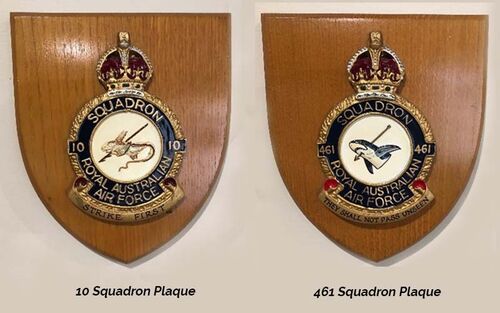
Foundation of 461 (Sunderland) Squadron RAAF (The "Anzac" Squadron)
25 April 1942
Australia's maritime patrol forces in Britain were doubled with the establishment of a new Australian flying-boat Squadron, No.461, in Britain on Anzac Day 1942.
A significant nucleus of experienced airmen from No.10 Squadron came across to 461.
Ken Dowling’s brother Bill was a pilot in 461 Squadron.
Having survived the infamous “Bay of Biscay” battle in aircraft N461 against 8 Junker aircraft on 2 June 1943, he and his crew were killed in action when the plane he was captaining M461 was shot down on 13 August 1943.
Sources:
With thanks to the following -
Wikipedia.
No. 3 Squadron.
Christopher Widenbar, Manager Operations of the Shrine of Remembrance “First to Fight: No. 10 Squadron”.
History of the Royal Canadian Airforce – “Short Sunderland – The Flying Porcupine” by Don Norrie.
Classic War Birds – “Short Sunderland”
Baff KC (1983)” Maritime is Number Ten, A History of No. 10 Squadron RAAF” pp276-277

